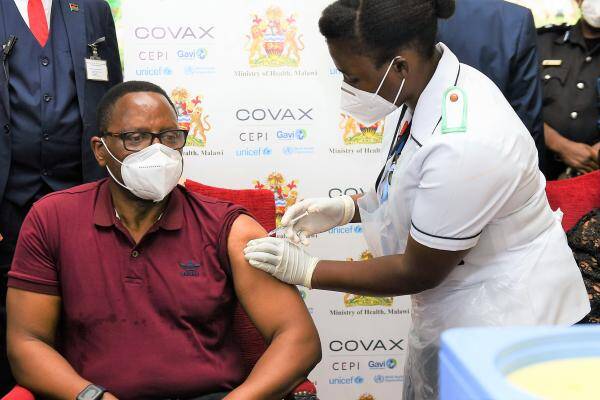
The Board of Gavi, the Vaccine Alliance, has approved plans that will see lower-income countries access new vaccines in the coming years and that will provide COVID-19 vaccines to high-risk groups until 2025.
The plan will enable pilot investment in reserves of investigational candidate vaccines if appropriate candidate vaccines become available, helping respond more quickly to outbreaks of Marburg and Ebola Sudan viruses.
“Gavi’s record as an innovator and a disrupter in global health has been confirmed today,” said Professor José Manuel Barroso, Chair of Gavi. “Decisions taken by our Board will help countries fight disease more cost-effectively, be better equipped to fight back against emerging threats and continue to protect those most at risk from COVID-19.”
The Board approved Gavi investment in the six-in-one vaccine – a combination of the pentavalent vaccine, which protects against diphtheria, tetanus, pertussis (whooping cough), hepatitis B and Haemophilus influenzae type b, and the inactivated polio vaccine (IPV). A window will now be opened for countries to apply for funding. The hexavalent vaccine is expected to help countries deliver protection against all these diseases more efficiently and cost-effectively, and to contribute significantly to polio eradication efforts by expanding IPV coverage.
Gavi and Alliance partners will also provide support to countries who are currently administering pentavalent vaccine and want to make the switch, and work with manufacturers to ensure the health of both the pentavalent and IPV markets.
Looking further ahead, the Board also approved a long list of vaccines to be considered for inclusion in Gavi’s next Vaccine Investment Strategy, which will be finalised by 2024. The approved long list includes licensed or pipeline products against hepatitis E, mpox, dengue, COVID-19, tuberculosis, group B streptococcus, chikungunya, and shigella.
The Board also received an update on Gavi’s work to boost regional vaccine manufacturing, particularly in Africa. They noted progress made on the African Vaccine Manufacturing Accelerator, a financial instrument that is being designed to help support sustainable vaccine manufacturing on the continent, in close consultation with key stakeholders such as the Africa Centres for Disease Control and Prevention (Africa CDC).
Further consultations and technical work on this important instrument will be carried out this year, with the intention of returning to the Board for approval in December 2023. The Secretariat further reported on plans underway to ensure “day zero” financing for future pandemic vaccine response.
Gavi confirmed to the Board that the Vaccine Alliance will re-start programmes to introduce vaccines that were previously approved but paused either due to the pandemic or product development delays.
On this list are hepatitis B birth dose, diphtheria-tetanus-pertussis (DTP) boosters, and rabies post-exposure prophylaxis (PEP). Also included on the 2018 list were two additional vaccines – the maternal respiratory syncytial virus (RSV) vaccine and multivalent meningococcal conjugate vaccine – which could soon see approved products on the market. The next steps in this process are to continue working with Alliance partners, particularly the World Health Organization (WHO), UNICEF and countries to create timelines, technical guidance for introduction of these new products, and outline the parameters of these new programmes.
“With more than 1 billion unique children reached, one eighth of humanity has now been protected by the Vaccine Alliance. While it is crucial to acknowledge the achievements of the past, the continued measure of success will be how we build on these experiences to deliver even more impact in the future. This week’s decisions by the Board provide us with a clear path towards an Alliance which is even more effective in protecting lives, addressing the consequences of climate change, and harnessing innovation to support countries,” said Dr Seth Berkley, CEO of Gavi.
Since its inception in 2000, Gavi has helped to immunise a whole generation – over 1 billion children – and prevented more than 16.2 million future deaths, helping to halve child mortality in 73 lower-income countries.














